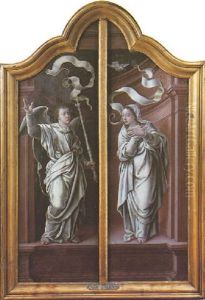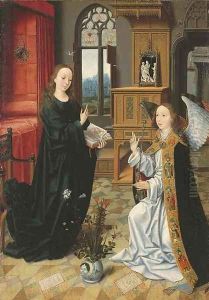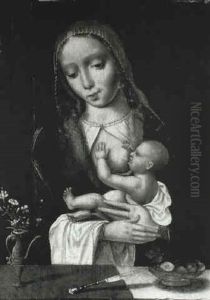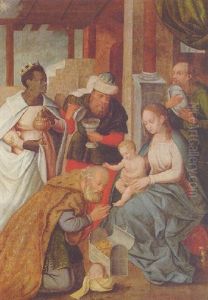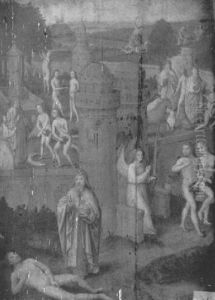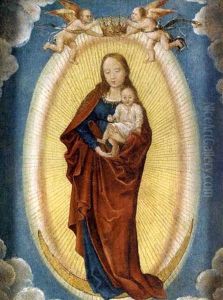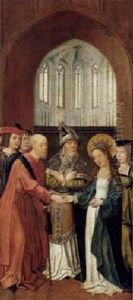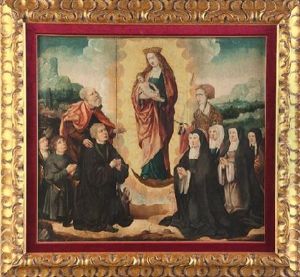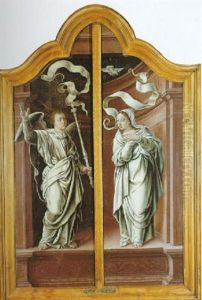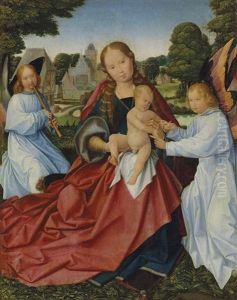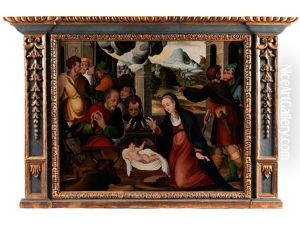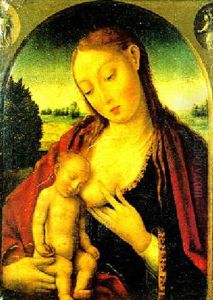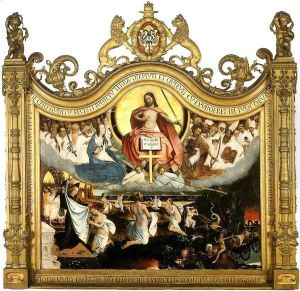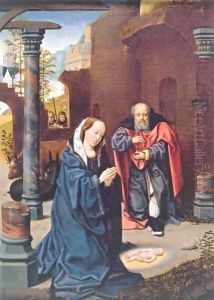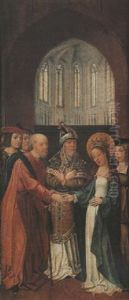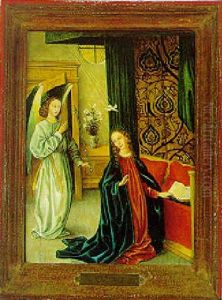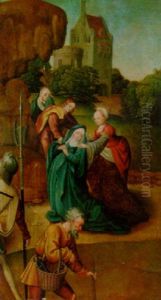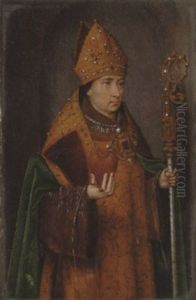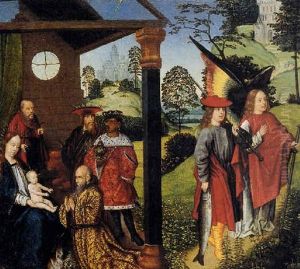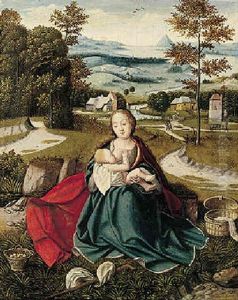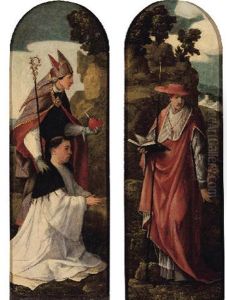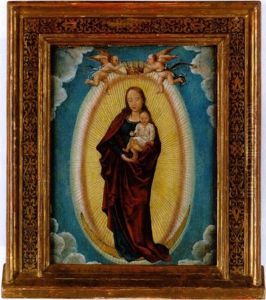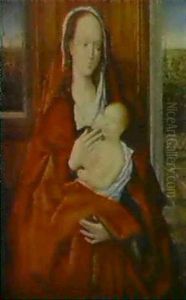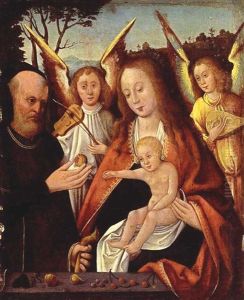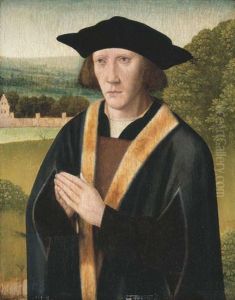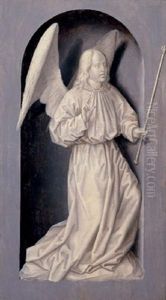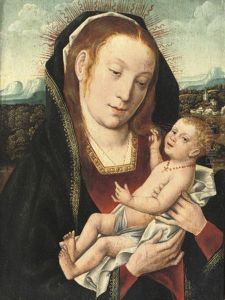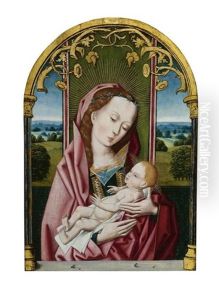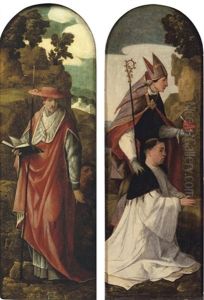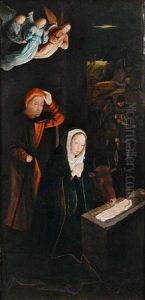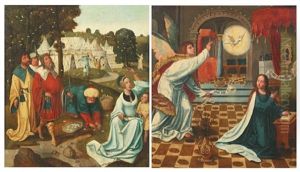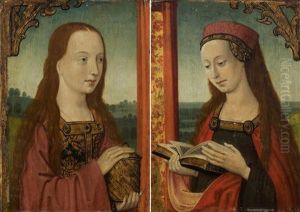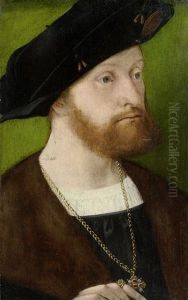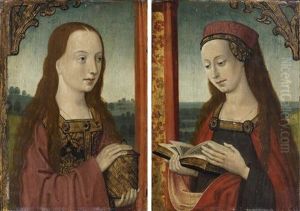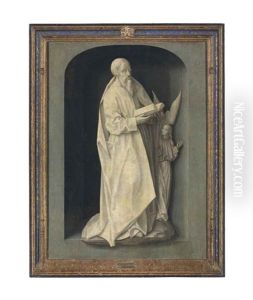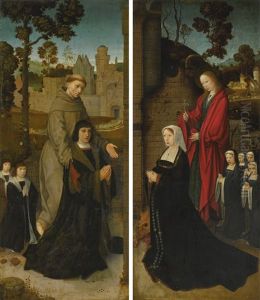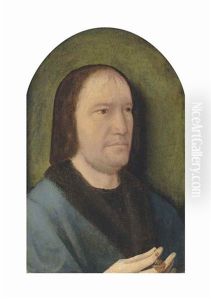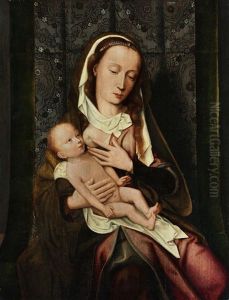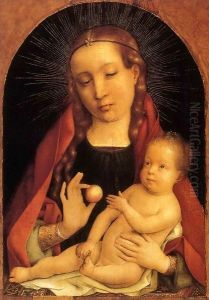Jan Provoost Paintings
Jan Provoost, or Jan Provost, was a Flemish painter born in Mons, now in Belgium, around 1465. He was known for his religious paintings, portraits, and allegorical scenes. Provoost's early life and training are somewhat obscure, but it is believed that he may have studied under Simon Marmion, a renowned manuscript illuminator and painter of the time. Provoost became a master in the Antwerp Guild of Saint Luke in 1493, which suggests that he likely trained there or in Bruges, where he later moved and continued his work.
Provoost's style was influenced by the great Flemish masters of the time, such as Hans Memling and Gerard David, but he also incorporated elements from the Italian Renaissance, which he may have encountered through prints or possibly through travel. Provoost was known for his detailed landscapes and architectural backgrounds, and his use of color was both rich and subtle. His figures often display a serene and contemplative character, imbued with a sense of grace and serenity.
In Bruges, he achieved notable success and became a prominent painter in the city. He was married to the daughter of the painter Lancelot Blondeel, which may have further established his position within the artistic community. Provoost also served as a town councilor in Bruges, indicating his high standing in the local society.
One of Jan Provoost's most famous works is the 'Death of the Virgin,' which is now housed in the Groeningemuseum in Bruges. This painting showcases his masterful skill in composition and his ability to convey narrative and emotion through his art. Provoost's oeuvre includes several other significant religious works, such as altarpieces and depictions of saints, as well as portraits of prominent individuals of his time.
Jan Provoost's death is recorded in 1529 in Bruges. His work continued to influence artists in the region, and his paintings can be found in various museums around the world, testament to his skill and the enduring appeal of his art. Provoost's legacy is that of a transitional figure, bridging the gap between the Late Gothic and Renaissance styles in Northern Europe.
